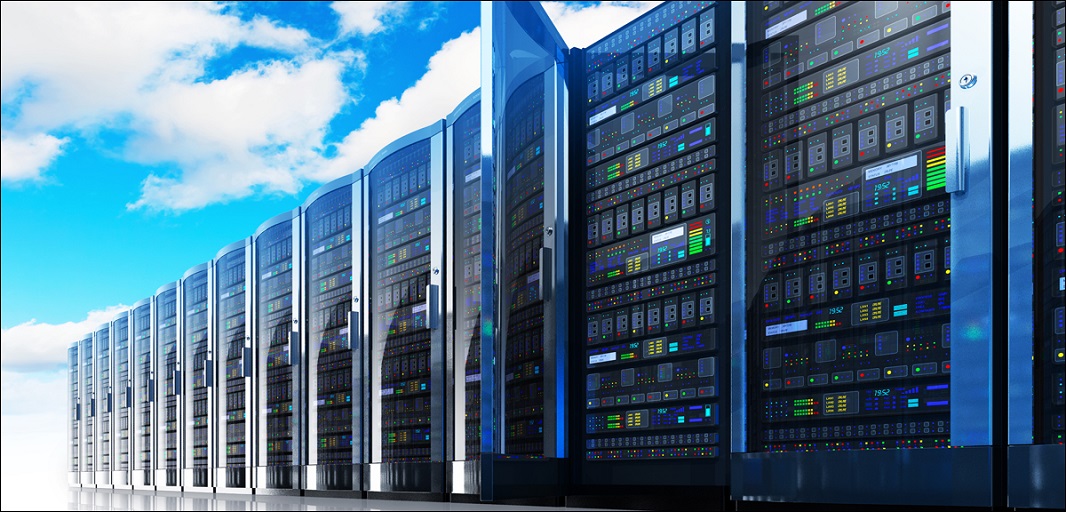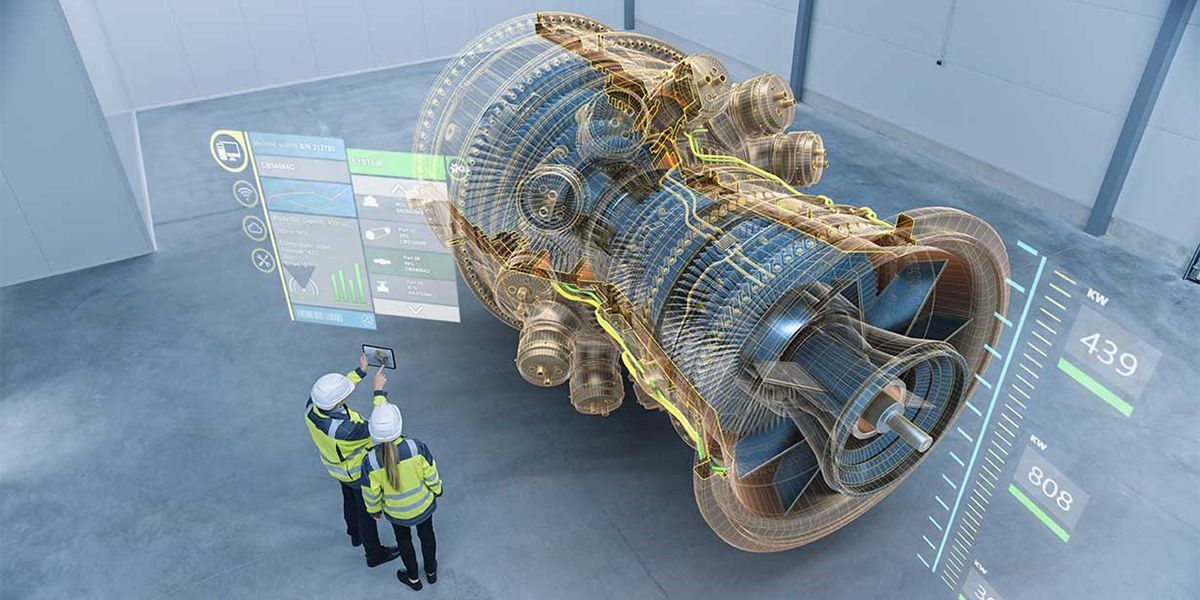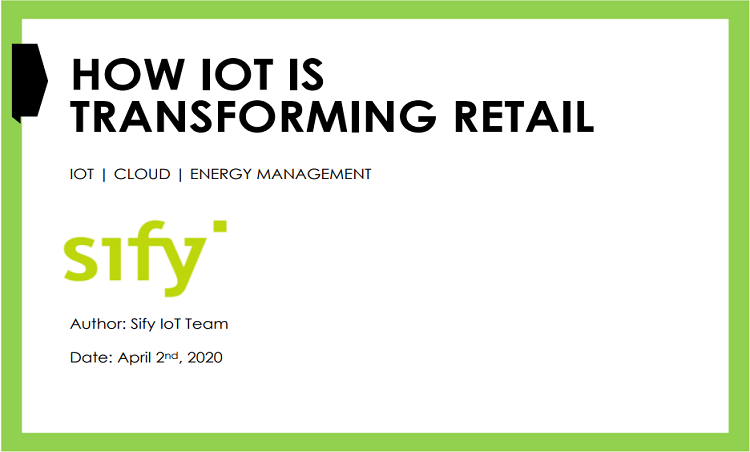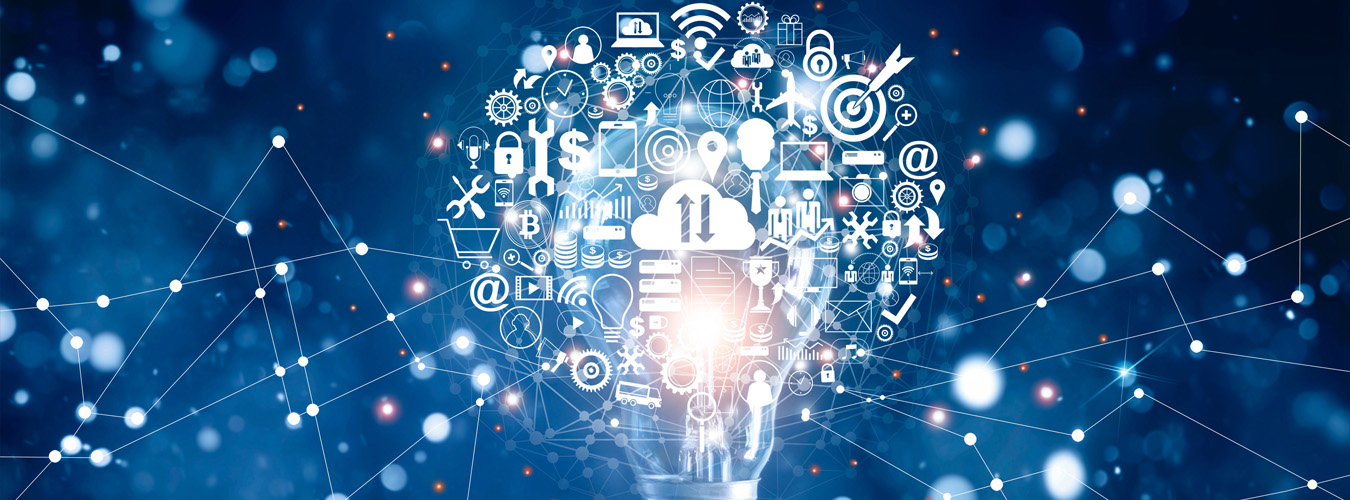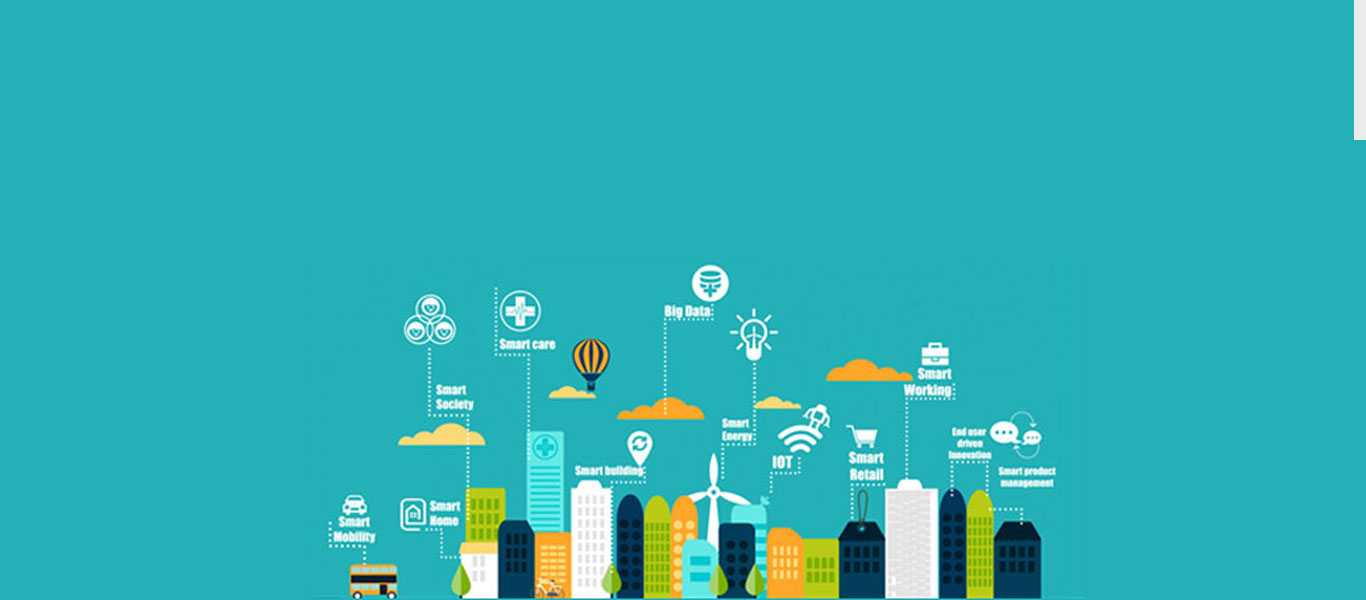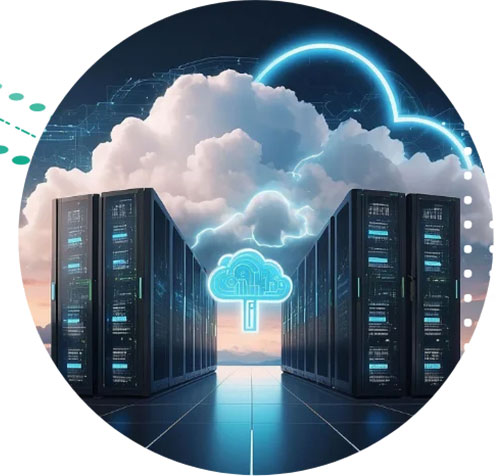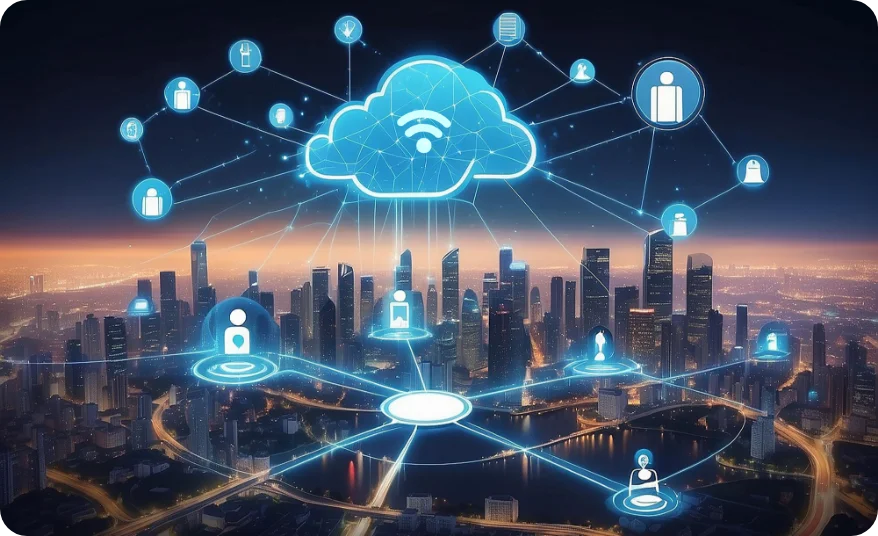To Infinity and Beyond!
Vamsi Nekkanti looks at the future of data centers – in space and underwater
Data centers can now be found on land all over the world, and more are being built all the time. Because a lot of land is already being utilized for them, Microsoft is creating waves in the business by performing trials of enclosed data centers in the water.
They have already submitted a patent application for an Artificial Reef Data Center, an underwater cloud with a cooling system that employs the ocean as a large heat exchanger and intrusion detection for submerged data centers. So, with the possibility of an underwater cloud becoming a reality, is space the next-or final-frontier?
As the cost of developing and launching satellites continues to fall, the next big thing is combining IT (Information Technology) principles with satellite operations to provide data center services into Earth orbit and beyond.
Until recently, satellite hardware and software were inextricably linked and purpose-built for a single purpose. With the emergence of commercial-off-the-shelf processors, open standards software, and standardized hardware, firms may reuse orbiting satellites for multiple activities by simply downloading new software and sharing a single spacecraft by hosting hardware for two or more users.
This “Space as a Service” idea may be used to run multi-tenant hardware in a micro-colocation model or to provide virtual server capacity for computing “above the clouds.” Several space firms are incorporating micro-data centers into their designs, allowing them to analyze satellite imaging data or monitor dispersed sensors for Internet of Things (IoT) applications.
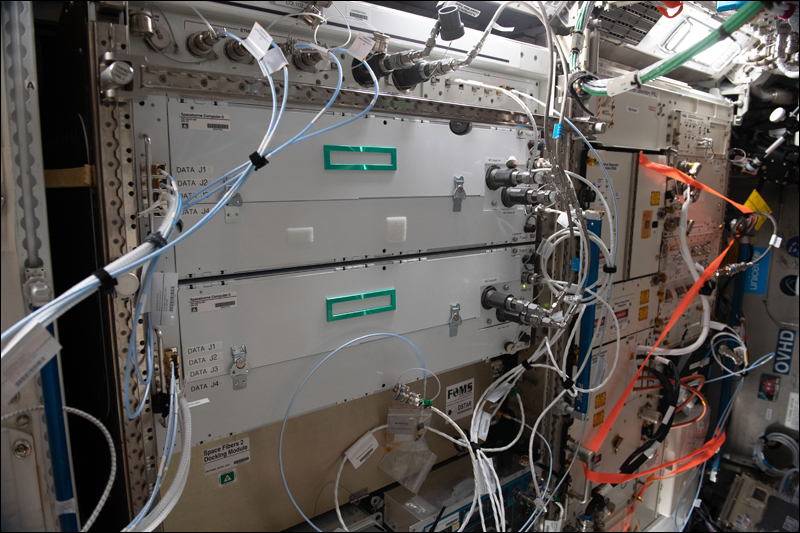
HPE Spaceborne Computer-2 (a set of HPE Edgeline Converged EL4000 Edge and HPE ProLiant machines, each with an Nvidia T4 GPU to support AI workloads) is the first commercial edge computing and AI solution installed on the International Space Station in the first half of 2021 (Image credit: NASA)
Advantages of Space Data Centers
The data center will collect satellite data, including images, and analyze it locally. Only valuable data is transmitted down to Earth, decreasing transmission costs, and slowing the rate at which critical data is sent down.
The data center might be powered by free, abundant solar radiation and cooled by the chilly emptiness of space. Outside of a solar flare or a meteorite, there would be a minimal probability of a natural calamity taking down the data center. Spinning disc drives would benefit from the space environment. The lack of gravity allows the drives to spin more freely, while the extreme cold in space helps the servers to handle more data without overheating.
Separately, the European Space Agency is collaborating with Intel and Ubotica on the PhiSat-1, a CubeSat with AI (Artificial Intelligence) computing aboard. LyteLoop, a start-up, seeks to cover the sky with light-based data storage satellites.
NTT and SKY Perfect JV want to begin commercial services in 2025 and have identified three primary potential prospects for the technology.
The first, a “space sensing project,” would develop an integrated space and earth sensing platform that will collect data from IoT terminals deployed throughout the world and deliver a service utilizing the world’s first low earth orbit satellite MIMO (Multiple Input Multiple Output) technology.
The space data center will be powered by NTT’s photonics-electronics convergence technology, which decreases satellite power consumption and has a stronger capacity to resist the detrimental effects of radiation in space.
Finally, the JV is looking into “beyond 5G/6G” applications to potentially offer ultra-wide, super-fast mobile connection from space.

The Challenge of Space-Based Data Centers
Of course, there is one major obstacle when it comes to space-based data centers. Unlike undersea data centers, which might theoretically be elevated or made accessible to humans, data centers launched into space would have to be completely maintenance-free. That is a significant obstacle to overcome because sending out IT astronauts for repair or maintenance missions is neither feasible nor cost-effective! Furthermore, many firms like to know exactly where their data is housed and to be able to visit a physical site where they can see their servers in action.
While there are some obvious benefits in terms of speed, there are also concerns associated with pushing data and computing power into orbit. In 2018, Capitol Technology University published an analysis of many unique threats to satellite operations, including geomagnetic storms that cripple electronics, space dust that turns to hot plasma when it reaches the spacecraft, and collisions with other objects in a similar orbit.
The concept of space-based data centers is intriguing, but for the time being-and until many problems are worked out-data centers will continue to dot the terrain and the ocean floor.
The future of training is ‘virtual’
What sounds like the cutting edge of science fiction is no fantasy; it is happening right now as you read this article
Imagine getting trained in a piece of equipment that is part of a critical production pipeline. What if you can get trained while you are in your living room? Sounds fantastic, eh. Well, I am not talking about e-learning or video-based training. Rather what if the machine is virtually in your living room while you walk around it and get familiar with its features? What if you can interact with it and operate it while being immersed in a virtual replica of the entire production facility? Yes, what sounds like the cutting edge of science fiction is no fantasy; it is happening right now as you read this article.
Ever heard of the terms ‘Augmented Reality’ or ‘Virtual Reality’? Welcome to the world of ‘Extended Reality’. What may seem like science fiction is in reality a science fact. Here we will try to explain how these technologies help in transforming the learning experience for you.
Let’s get to the aforementioned example. There was this requirement from a major pharmaceutical company where they wanted to train some of their employees on a machine. Simple, isn’t it? But here’s the catch. That machine was only one of its kind custom-built and that too at a faraway facility. The logistics involved were difficult. What if the operators can be trained remotely? That is when Sify proposed an Augmented Reality (AR) solution. The operators can learn all about the machine including operating it wherever they are. All they needed was an iPad which was a standard device in the company. The machine simply augments on to their real-world environment and the user can walk around it as if the machine were present in the room. They could virtually operate the machine and even make mistakes that do not affect anything in the real world.
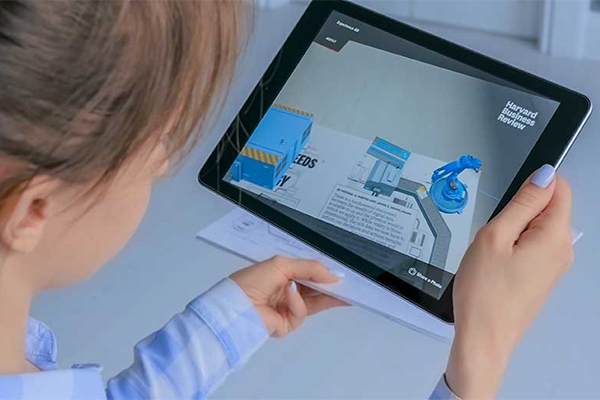
What is the point of learning if the company cannot measure the outcome? But with this technology several metrics can be tracked and analysed to provide feedback at the end of the training. So, what was the outcome of the training at the pharma company? The previous hands-on method took close to one year for the new operators to come up to speed of experienced operators. But even then, new operators took 12 minutes to perform the task that experienced operators do in 5 minutes. The gap was a staggering 7 minutes. But using the augmented reality training protocols, all they needed was one afternoon. New operators came to up speed of experienced operators within no time. This means not only can more products reach deserving patients but also significantly reduces a lot of expenditure for the company. And for the user, all they need is a smartphone or a tablet that they already have. This is an amazingly effective training solution. Users can also be trained to dismantle and reassemble complex machines without risking their physical safety.
Not only corporates but even schools can also utilise this technology for effective teaching. Imagine if the student points her tablet on the textbook and voila, the books come alive with 3D models of a volcano erupting, or even make history interesting through visual storytelling.
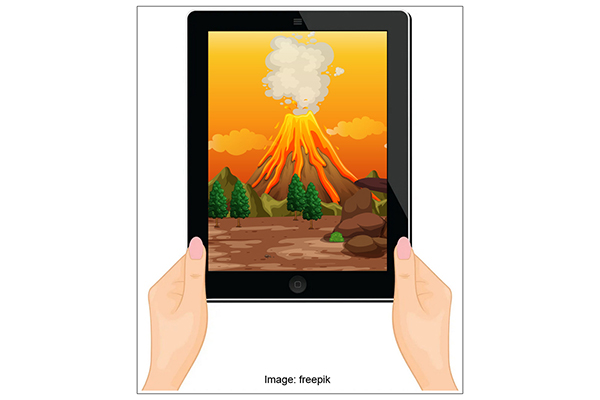
Now imagine another scenario. A company needs their employees to work at over 100 feet high like on a tower in an oil rig or on a high-tension electricity transmission tower. After months of training and when employees go to the actual work site, some of them realize that they cannot work at the height.

They suffer from acrophobia or a fear of heights. They would not know of this unless they really climb to that height. What if the company could test in advance if the person can work in such a setting?
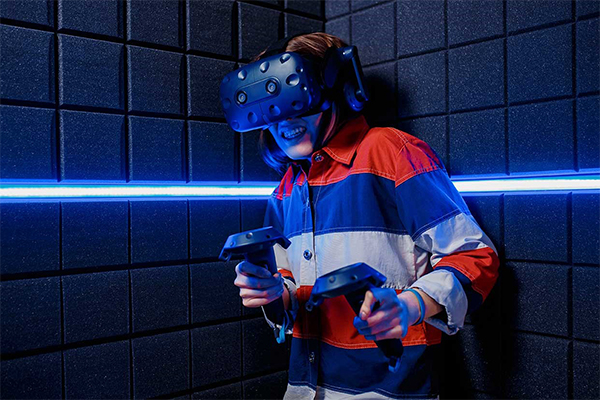
Enter Virtual Reality (VR). Using a virtual reality headset that the user can strap on to their head, they are immersed in a realistic environment. They look around and all they see is an abyss. They are instructed to perform some of the tasks that they will be doing at the work site. This is a safe way to gauge if the user suffers from acrophobia. Since VR is totally immersive, users will forget that they are safely standing on the floor and might get nervous or fail to do the tasks. This enables the company to identify people who fear heights earlier and assign them to a different task.
Any risky work environment can be virtually re-created for the training. This helps the employees get trained without any harm and it gives them confidence when they go to the actual work location.
VR requires a special headset and controllers for the user to experience it. A lot of different headsets with varying capabilities are already available for the common user. Some of these are not expensive too.
A multitude of metrics can be tracked and stored on xAPI based learning management systems (LMS). Analytics data can be used by the admin or the supervisor to gauge how the employee has fared in the training. That helps them determine the learning outcome and ROI (return on investment) on the training.
Training is changing fast and more effective using these new age technologies. A lot of collaborative learning can happen in the virtual reality space when multiple users can log on to the same training at the same time to learn a task. These immersive methods help the learner retain most of what they learnt when compared to other methods of training.
Well, the future is already here!
India IOT Summit 2017
A summit on ‘The future of IOT – the next revolution’
Internet of Things was intended to redefine life; it is not just technology but is expected to change how we live, work, commute, consume, entertain and more. Powered by connectivity and computing, IoT aims to connect people, devices and accessories and events in a seamless manner to simplify the process of simpler tasks and improve the quality of complex decision making. Developments in the related fields of artificial intelligence, robots / ibots and M2M communications promise a more connected world.
Sify participated in the India IOT Summit 2017 as a Digital Transformation Partner. Sify shared its views in a panel discussion on “The Future of IoT – The Next Revolution”.
Discussion happened around challenges that are currently hindering innovation in IoT, How IoT is shaping Industrial Business Models, what kind of challenge or opportunity customers are facing between order to cash in terms of ownership – various department that comes in between – sales, operation, customer service, finance etc – how are customers creating the ownership among stakeholders?
The panel discussions were on the following topics…
CEO Panel – The Future of IoT – The Next Revolution
How is IOT influencing and changing business models
Stepping into the fast lane, what does a fully autonomous future really look like?
Developing the future of IOT Security
Harnessing the power of IoT to transform manufacturing
Venue
The Lalit, Mumbai
Date
22nd August 2017 – 23rd August 2017
Organizers
Quest Conferences
How IoT is transforming retail
How IoT is transforming retail
Retail is one of India’s largest Industry that contributes about 10% of the country’s overall GDP and generates 8% employment. Energy, Manpower and real estate are the major cost contributors in retail sector. The Industry consumes about 18% of electricity supplied in the country
Download whitepaper
Re-Architect your Network with Sify
Integrate your Cloud, Core, and Edge
With the advent of IoT, pervasive mobility, and growing cloud service adoption, the network has become increasingly distributed, and the need for faster compute and connectivity at the edge has become more pronounced.
As organizations increasingly drive digital transformation initiatives and adopt hybrid multi-cloud, the network must be rearchitected to support new-age topologies. Hence, Network Transformation gains predominance. Network Transformation and re-architecture must play out at all the 3 points of presence of the Network – at the Network Core, Network Management layer, and the Network Edge.
Let us look at the significance of the Transformation at these 3 layers and the contribution that Sify is bringing at each of these points of presence.
Transformation at the Network Core
With Cloud adoption, Data Center is no more the Core of the network. As enterprises are moving their applications to the cloud on consumption-based models for enhanced business productivity, it has become important to secure connectivity to the Cloud and extend the Quality of Service to a hybrid multi-cloud environment. Hence, the transformation of the network at the Core is essential for improved agility, enhanced productivity, and scalability.
Sify’s Transformation Services at the Core are designed to help customers harness the true potential of cutting-edge cloud, digital, and network technologies. We help our customers accomplish their transformation goals and meet dynamic business requirements capably by providing Cloud Interconnect networks, which enable customers to establish direct connectivity between their private and public cloud infrastructure and fully realize the benefits of hybrid cloud architecture. With our Hyperscale Cloud partnerships and the Cloud Interconnect Networks, combined with expertise to deploy technologies like SDWAN & NFV, we hold a distinct level of expertise in network integration and transformation for a hybrid multi-cloud environment.
Transformation at the Network Management and Control Layer
As networks become more & more complex, organizations nowadays are leveraging multiple network service providers, and they have distributed nature of applications and end-users. This has resulted in a very complex network architecture. Moreover, monitoring and management of these complex and distributed networks and network elements have become very critical. Network Management & Control requires a distinct level of expertise, advanced tools, and automation platforms, and hence makes good business sense to outsource the management to an expert who has the benefit of scale, experience, and toolsets to deliver the same. The customer can in turn focus on his core business.
Empowered with a robust Network Operating Center, Sify offers a wide spectrum of Network Consolidation, Network Transformation, and Operations Outsourcing solutions. Sify can manage customer’s as-is WAN network architecture, provide 24×7 monitoring of links, undertake incident management, change management, and can yet ensure unified SLA management across multiple service providers in a single-window provision. Not only this, but Sify also helps customers in network study & assessment and consulting for Network Re-Architecture and Managed Services.
Transformation at the Network Edge
Network Edge is the bridge between an organization and its end customers to deliver enhanced user experience and employee productivity. It is a strategic gateway to connect widely distributed organizations. The traditional networks cannot accommodate the new IoT devices, sensors, and plethora of Edge devices that are connected and managed at the Edge. Therefore, it is crucial to adopt transformation of the network at the edge to meet the requirements of the end devices and make them an integral part of the Enterprise Networks.
Sify Edge Connect Services include advisory services like an assessment of customer requirement with respect to coverage and performance. Further, we ensure end-to-end implementation of customer’s WiFi network, which includes configuring guest access and incorporating employee authentication & access. Our highly secure platform provides insight into user patterns and analytics such as the location of users, applications browsed, etc. Sify also provides deep visibility and control of the performance and usage of applications. In addition, Sify Edge Services include IoT services and aggregation and integration of the same with the Enterprise Network.
While rearchitecting your network, it is important to include aspects connecting the above three points of presence of users and applications. This will help you architect a network that delivers efficiency and is future-ready. However, the majority of organizations lack the necessary skills and expertise to envision and manage such a complex transformation, and that is where Sify Technologies can be your partner in this transformation journey.
What makes Sify the preferable partner for Network Transformation?
Sify is the largest Information and Communications Technology service provider in India, serving 10,000+ businesses across multiple industries with its impeccable Cloud and Data Center services, Network services, Security services, Digital Services, and Application Services. Our industry-wide experience of working with diverse clients, skilled workforce to manage varied network transformation projects, and the Technology Partner ecosystem, makes us the most trusted Network Transformation partner for India Enterprises.
Today, Network Integration, Network Transformation, and Managed Services are the key differentiators. That’s where Sify can help businesses achieve their strategic goals. As a strong, capable ICT transformation partner, Sify brings in the integrated skillsets, processes, and tools that are required for a seamless transition in a cost-effective way. Add to this, Sify’s engineering capabilities are the best in class and help our customers design innovative solutions that are custom-built to suit their business needs.
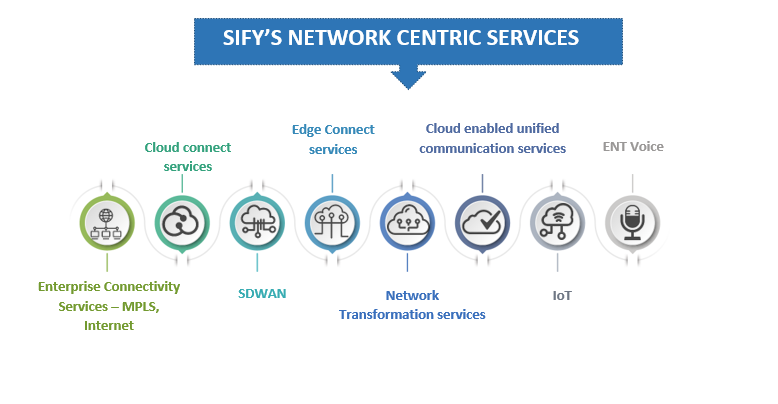
Simplify Your Network Transformation
Simplify your Network Transformation with Sify
The business world is witnessing an unprecedented transformation as organizations across verticals are passionate to embrace new technologies. Cloud, Analytics, Automation, Internet of Things, Artificial Intelligence, and Machine Learning are some major forces that are enabling enterprises to deliver a top-tier experience to customers. As organizations nowadays are highly reliant on these emerging technologies to achieve organizational excellence, one must acknowledge that all cutting-edge technologies require an intelligent and robust network. There are numerous factors that are fundamentally redefining the ways new-age networks work and function. The emergence of new global trends and multiple new technology trends have compelled organizations to demand more from networks. This blog discusses:
- Major global and technology trends that have paved the way for network transformation.
- New-age network architecture and design for Intelligent Network services
- How Sify can help you in your network transformation journey with a wide range of Intelligent Network Services.
Global Business Trends leading to increased demands from Networks
- Hyperconnected Enterprises:
In the digital age, global organizations rely on a multitude of connections for geographically distributed people, processes, and devices. Also, the increasing adoption of hybrid and multi-cloud has compelled global enterprises to become hyperconnected. For such hyperconnected enterprises, a scalable network is quite critical to deliver top-tier services to customers across the globe through digital technologies. - Digital Business Transformation:
In line with their digital ambition, organizations worldwide are looking to leverage Cloud-native technologies such as analytics, mobility, IoT, AI, and ML to modernize and develop new processes, services, and models for generating new revenue streams. An intelligent and adaptable network can quickly adjust according to evolving requirements, facilitating seamless transformation. - Automation and Robotics:
Several enterprises rely on Automation, Robotics, and Robotic Process Automation to improve operational efficiency, quality of services, and customer satisfaction score. The use of Automation and Robotics in the coming years will continue to surge as companies look to improve quality, workforce productivity, customer satisfaction, and more. This is even more relevant than ever in the pandemic-stricken world. As automation of processes is time-sensitive and mission-critical, enterprises will need round-the-clock availability and reliability from their distributed networks as even a minor lapse in network availability or reliability can potentially hamper the process flow and affect overall efficiencies and customer satisfaction.
Technology Trends powering fundamental Network Transformation
- Applications being modularized and distributed across Clouds: Recently, hybrid Cloud and microservices have gained massive prominence across business verticals. The majority of software applications are being modularized and distributed across public Clouds and network edge. To support applications across such a distributed landscape, the network needs to transform fundamentally. There is a need for Networks to be agile, seamless, secure, and responsive to dynamic application landscapes.
- IoT and M2M integration with mainstream Networks: The exponential rise in the number of IoT devices worldwide highlights the need for smart Machine-to-Machine communication. This means the network must capably provide connectivity to all the IoT devices and integrate them smartly with mainstream networks.
- Pervasive Mobility: Owing to the anywhere data center and anywhere user access, there is a need for a robust network to allow users to access applications on Cloud. As anticipated, mobile users will continue to grow in the years to come and they would need round-the-clock high-performance connectivity to access applications on Cloud from private devices over Wi-Fi or 4G networks. Therefore, to cater to this rapidly growing mobile population, it becomes imperative to strengthen the Edge connectivity to these vast diverse, and distributed user base. Edge Transformation is predicted to be the next big wave in the Networking space. As per Gartner – by 2025, 75% of enterprise-generated data in industrial settings will be created and processed at the edge.
- Immersive video experience: User experience has taken the center stage in the digital era, therefore enterprises are keen to make the video experience more immersive. They have started leveraging the power of digital media technologies, Virtual Reality, Augmented Reality, and immersive 3D environments to ensure a top-tier experience. This is placing greater demands on enterprise networks as video experience is totally dependent on low-latency and high availability infrastructure. Moreover, enterprises also want their networks to provide end-to-end bandwidth and dynamic performance controls to further make the experience more enriching.
New-age network architecture and design for Intelligent Network Services
In response to emerging trends and the fast-changing IT landscape, organizations need to rethink network architecture and design strategies to drive digital transformation. It becomes quite critical to align network capabilities in accordance with the changing business requirements and modern topologies. In this light, some of the expectations from Intelligent Network Services are the following:
- Support the fast-changing set of users, applications, devices, and services and unify them intelligently for top-tier user and application experience
- Seamlessly connect between distributed IT assets and applications in a DC and hybrid multi-cloud environment
- Leverage Software and other functionalities to control, rather than physical access and distributed policy control
- Leverage the cutting-edge technologies and algorithms to collect, assimilate, analyze, and visualize networking information in real time for better visibility and control
To achieve the above objectives, there are 3 broad aspects that the IT leaders must follow while designing and architecting the new-age network architecture.
Networking architecture for anywhere Data Center:
Organizations nowadays have their applications and data spread across Data Centers, Clouds, and Edge environments in diverse geographical regions. To meet the requirements of this diverse hybrid ICT landscape, organizations need new networking architecture that is ready for Cloud, meets application connectivity demands, and ensures technology and operational consistency across locations. Therefore, the new-age network must facilitate faster and safer modes of data transfer across Data Centers, Cloud, and Edge devices. This highlights the significance of Cloud-ready Networks with DC Interconnects and Cloud Connect capabilities.
Being a trusted ICT company, Sify ensures a Cloud-ready Network, comprising of Data Center Interconnects, Hyperscale Cloud Connects, and Internet Exchanges for carrier neutrality. Our Cloud-ready Network provides you with deterministic and secure connectivity to move applications, middleware, and database workloads between private infrastructure and Cloud for improved application performance.
Hybrid WAN and Application performance-focused Network Architecture:
In the age of hybrid and multi-cloud, it becomes critical for organizations to have a well-thought-out network strategy for distributed workloads, data footprints, applications, services, and microservices. With the rise in multi-cloud adoption, the legacy hub-and-spoke WAN architecture can hold organizations back. The shift from Data Centers towards Cloud has resulted in the more prevalent use of the SLA-defined Internet (in addition to MPLS) as a reliable and pervasive way to establish robust connectivity. Hence, modern-day businesses need a hybrid WAN strategy – the use of internet for business applications along with MPLS. This means the new-age network must enable the hybrid WAN and be smart enough to adapt to the changing application performance demands in a hybrid or multi-cloud environment, ensuring better performance.
Herein, Software Defined Networking can enable fundamental network transformation. SDN can help accomplish the goals of network transformation – agility, flexibility, and application centricity – by intelligently controlling the network architecture using software applications.
- Software Defined Networking facilitates flexible network architectures, which can utilize multiple network connectivity options (MPLS/ILL/BB/4G-LTE/Internet) which help leverage a Hybrid WAN strategy for the evolving DC and Cloud landscape
- SD-WAN ensures application awareness and complete visibility of site-wise utilization of various applications, which paves way for better performance, availability, and security.
- SD-WAN leverages the power of Cloud-based monitoring and management platform for centralized, real-time visibility of all resources.
- SD-WAN solutions can be easily integrated with legacy network architectures, which enable phase-wise migration of sites.
Sify’s SD-WAN platform is hosted in Secure Cloud, and our experts perform all the monitoring and management functions from the state-of-the-art NOC. This helps you maintain distance with different configuration tasks at branch sites and focus on your core business. Our SD-WAN solutions – coupled with end-to-end Managed Network Services – drive efficiencies, reduce cost, and optimize multi-cloud connectivity.
Centralized visibility, control, and insights of the Network:
Organizations need complete visibility and control over network connectivity to make the most of their Cloud investment. They would also want their network to provide intelligent insights that enable data-driven decision-making. An intelligent network can help businesses with automated and effortless orchestration of network resources. However, enabling a network with comprehensive intelligence is not as simple as it seems, because it requires a well-established network management practice with well-integrated toolsets.
Currently, only a few network service providers, such as Sify Technologies, have the assets, capabilities, and expertise to deliver Intelligent Network Services. We ensure centralized management of the network, powered with the capacity of SDN, to bring in the highest level of visibility and control of the entire network landscape. We offer a comprehensive range of Network Management Services on flexible outcome-based models – shared NOC Services, Hybrid NOC Services, and Dedicated NOC Services – from our state-of-the-art Network Operating Center.
Sify’s network experts ensure 24×7 proactive monitoring and management of network connectivity of devices such as routers, switches, and firewalls, and provide comprehensive reporting of various network parameters such as availability, performance, and security.
Conclusion
The emerging business and technology trends have compelled enterprises to empower their network with inherent intelligence built into them. This needs fundamental network transformation and re-architecting from the ground up, to suit evolving DC and Cloud landscape, distributed/mission-critical applications, and network orchestration needs.
Being a strategic network transformation partner, Sify helps you transform your network into a robust and intelligent asset. We provide Intelligent Network Services which include Cloud-ready Networks, Software-defined WAN, and centralized Network Managed Services, to accelerate your digital transformation with the robust foundation of a fast, secure, and future-ready network.
Securing Smart Cities and IoT devices
Smart Cities and IOT are largely articulated buzzword in Digital transformation space. Digital transformation is good to have significant change towards betterment of human life style and “way of living”. Digital Transformation is broadly classified into exponential technology growth, Miniaturization, Virtualization and Linking Bio Technology with Information technology. The goal of digital transformation is towards the betterment of human life, one of the finest outcome of digital transformation is Smart City. IoT devices are the building blocks for the smart city. Smart Cities are becoming a reality, more than 80 cities across the globe are projected to be smart by 2025. Information Security plays a vital role in Smart City space towards safeguarding the higher levels of confidentiality, Integrity and Availability of the available services and automation process flow in the critical infrastructure, physical security, Transport, Telecommunication System, Government applications, Surveillance system and Inter connected alert mechanism.
IoT devices will obviously make your life easy, from your work place using your smart phone you can open your home door which is 40 Kms away from your geo coordinate. Even you can switch off your home AC, patrol your external sight of your home, get an alert if there is any smoke inside your home (Nest Labs). Even you can water your plant, weed your farm, plant your seed in your Farm house (Farmbot). Precise details about your heart beat zone, calories burn, your fitness information will be flashed in your smart phone screen with a help of a IoT band in your wrist. But there is a negative side too.
Albert Einstein had commented “Technology growth is like the axe in the hands of pathological criminal” Inorganic, uncontrolled technological growth without rationale will always paves way to the path of destruction. IOT and Smart city remains as Blue Ocean in terms of Business opportunity. The market remains untapped, New entrants, Start-ups are making floods of appliances and devices which are connected without a thought basis of Interconnections behind. Kaspersky Organization baptized IoT as “Internet of Crappy things”
IoT devices are evolving without inbuilt security architecture, If the manufacturer designs the security architecture in a chip form and embeds in the IOT the Price becomes unaffordable, due to the market needs and business drivers, IoT devices are incarnated without the security chips, remains affordable and highly Vulnerable. In addition, the IoT devices are not properly tested in security aspects. A fitness band with lax security architecture in design will expose your personal, location and health related data to the internet world. An IoT Insulin pump and IoT pace maker security breach not only going to affect the confidentiality, but also affect the livability. Cherokee Jeep with a ECU OBD IoT devices had been hacked in United Kingdom and the cybercriminal taken the control of the Jeep and tried to crash the car. A Pace maker IoT device had been hacked and the hacker gained the access of IoT-pace maker and killed the victim. Those incidents triggers lexicographers to coin a new term Cyber-Killing.
Hence the IoT devices call for additional human security perspective along with information security perspective and proves the triadic CIA approach is not suffice. Fourth factor of livability should be added to form CAIL quartet (Confidentiality, Availability, Integrity, Livability), Since Digital transformation is playing role to linking Bio technology and Information Technology. Stern information Security control must be mandated for the IoT devices, else it will cannibalize the human life.
IoT devices are the building block of the smart cities. driver less train (IoT train), Driver less Tram (IoT tram, Driver less Cars (IoT Cars), Fire Alert system, Fire Suppression system, Water Supply system, All mode of transportation, Government Integrated Applications, Street Lighting System, Transport Control, Crime detection system. Everything will be integral part of Smart cities. The weakness in the IoT devices sums up and endanger the human life, If it is not architected well in Human security and Information Security aspects.
The IoT technologies exposes new risk and attack vectors like IoT Security-Side-channel Attacks, this type of attacks focus less on the information rather it focuses more on how the information is presented. “The world is a dangerous place to live, not because of the people who are evil, but because of the people who don’t do anything about it” Albert Einstein. Considering the challenges in this arena the IoT devices vendors, IoT Hardware manufactures, IoT Application developers must include Security (Authentication, Authorization and Encryption technologies ) in their designing phase, and Security Testing framework for IOT devices must be introduced. Furthermore, IoT Security compliant assaying should be mandated for all IoT devices.
Let’s aspire to have the secure Smart cities built with well-Engineered IoT devices towards the objective of betterment in human way of living.




